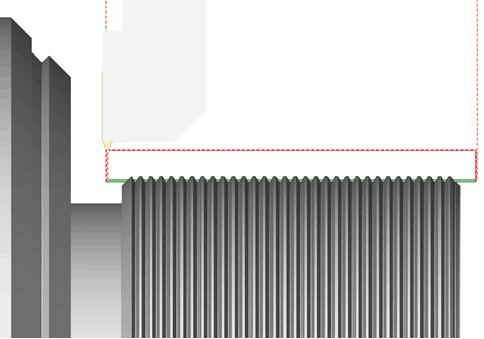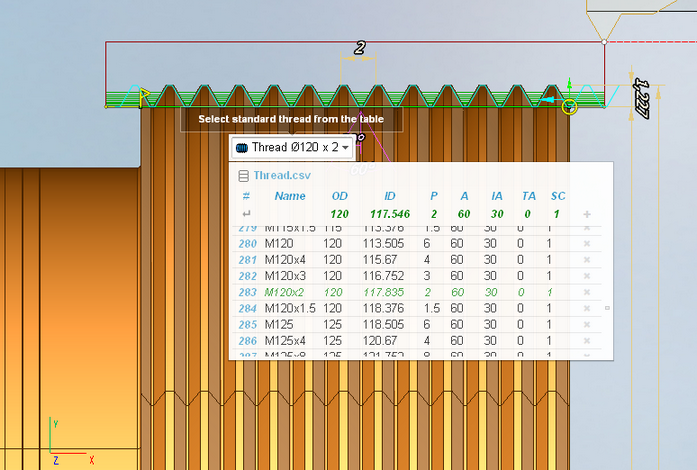OD, ID and Profile threading operations

Lathe threading operations are designed for the threading by turn cutter or thread chaser. Helical surface forming is performed by the simultaneous spindle rotation and linear tool motion. Operation allows to thread as standard types of a thread (metric, inch, pipe threads etc.), and threads with a non-standard tooth profile depend on tool shape (diameters, step and angles can be difened manually). Inside the Profile threading operation you can also define an arbitrary threaded groove profile.
The thread location is defined in the Job assignment window. Where are a few steps to define the thread position: select the simple elements on a part geometry (curves and faces) where you want to make a thread, press the button with desired cycle type, then define the curve segment from the start to the end point.

By default thread diameters are taken from selected geometry. If you need to change it you can use properties of cycle or much easier to use graphical preview and threads table.
Lathe threading cycles visualization exists. Interactive representation of the thread appears on the screen just after adding one of the threading cycles. Dimensions for thread pitch, depth top and bottom diameters, profile angles can be edited directly in the graphical screen.

Pop-up action bar with the thread name, that appears when you select cycle item, allows to open threads table quickly and select one of the standard threads. The list of threads can be modified in this panel intuitively.
The following strategies allowed for OD and ID threading operations:
The following strategies allowed for the Profile threading operations:
On the threads cycle's properties page can be assigned: thread name, depth, profile angles, number of starts, strategy to cut, number of passes etc. See the page of cycle parameters for detailed description of each strategy and Job assignment definition page for geometrical properties.
The simulation mode allows the checking of the thread shape. The cylindrical grooves are displayed instead the helical surface; because the simulation feature.
See also: